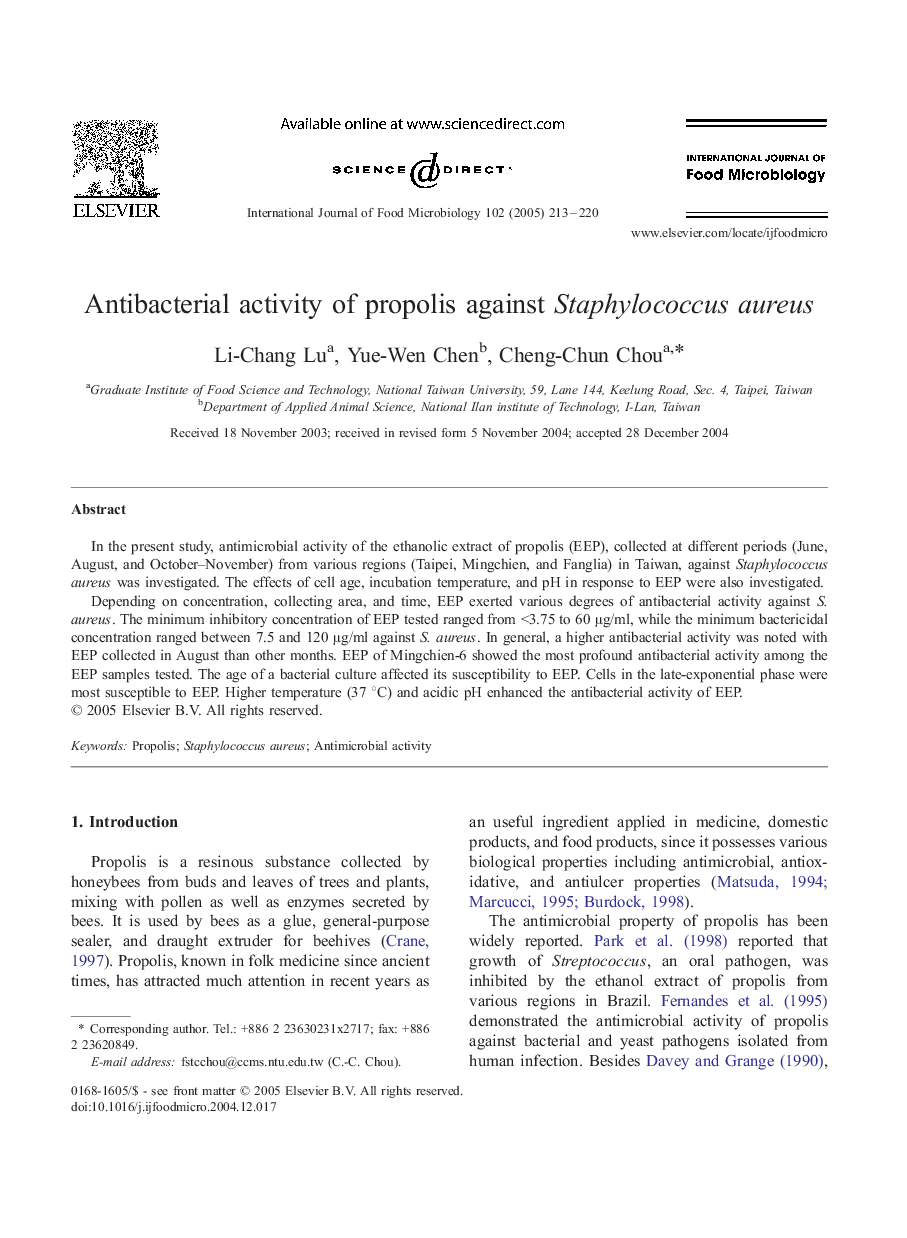| Article ID | Journal | Published Year | Pages | File Type |
|---|---|---|---|---|
| 10107399 | International Journal of Food Microbiology | 2005 | 8 Pages |
Abstract
Depending on concentration, collecting area, and time, EEP exerted various degrees of antibacterial activity against S. aureus. The minimum inhibitory concentration of EEP tested ranged from <3.75 to 60 μg/ml, while the minimum bactericidal concentration ranged between 7.5 and 120 μg/ml against S. aureus. In general, a higher antibacterial activity was noted with EEP collected in August than other months. EEP of Mingchien-6 showed the most profound antibacterial activity among the EEP samples tested. The age of a bacterial culture affected its susceptibility to EEP. Cells in the late-exponential phase were most susceptible to EEP. Higher temperature (37 °C) and acidic pH enhanced the antibacterial activity of EEP.
Related Topics
Life Sciences
Agricultural and Biological Sciences
Food Science
Authors
Li-Chang Lu, Yue-Wen Chen, Cheng-Chun Chou,
